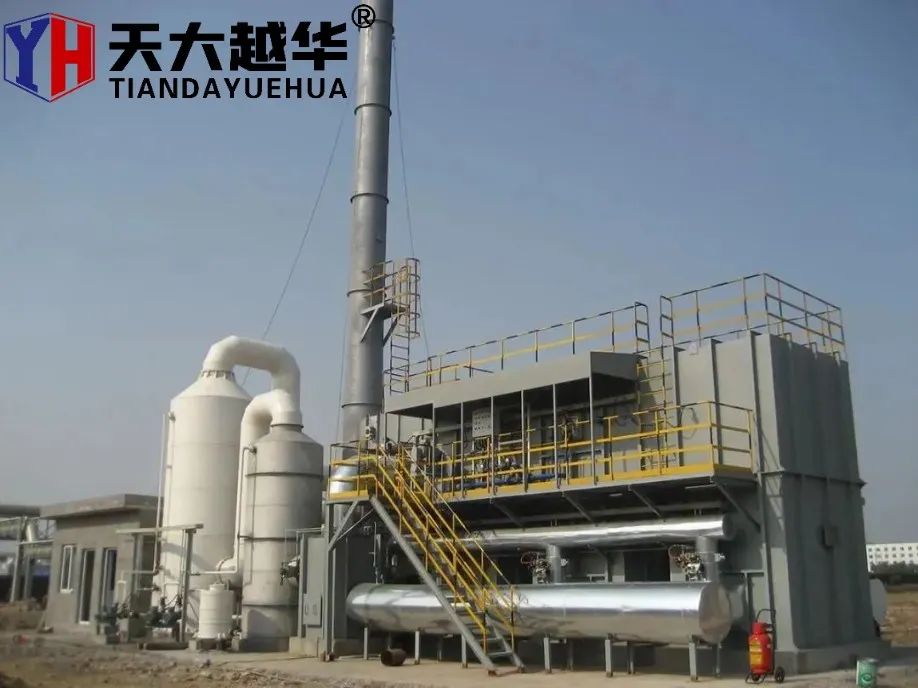Harnessing Thermal Oxidation: The Crucial Role in Oxidizer Incinerator RTO Operation
2024-04-08
In the ongoing battle against air pollution and industrial emissions, Oxidizer Incinerator Regenerative Thermal Oxidizers (RTOs) stand as stalwart guardians, employing advanced technology to neutralize harmful pollutants. At the heart of their operation lies thermal oxidation, a process that plays a crucial role in transforming volatile organic compounds (VOCs) and hazardous air pollutants (HAPs) into benign byproducts. In this blog, we'll explore the pivotal role of thermal oxidation in the operation of Oxidizer Incinerator RTOs, shedding light on its mechanisms and significance in environmental stewardship.
Understanding Thermal Oxidation
Thermal oxidation is a chemical process that involves the combustion of organic compounds at high temperatures in the presence of excess oxygen. In the context of Oxidizer Incinerator RTOs, thermal oxidation occurs within the combustion chamber of the incinerator, where pollutants are subjected to temperatures ranging from 1400°F to 1800°F (760°C to 982°C). At these elevated temperatures, organic compounds break down into carbon dioxide (CO2) and water vapor (H2O) through a series of chemical reactions:
\[ \text{Organic Compounds} + \text{Oxygen} \rightarrow \text{Carbon Dioxide} + \text{Water Vapor} + \text{Heat}\]
The Role of Thermal Oxidation in RTO Operation
1. Pollutant Destruction: The primary function of thermal oxidation in Oxidizer Incinerator RTOs is the destruction of pollutants emitted during industrial processes. By subjecting VOCs and HAPs to high temperatures, RTOs facilitate the complete combustion of these compounds, rendering them inert and harmless. This ensures compliance with regulatory standards and reduces the environmental impact of industrial emissions.
2. Efficient Energy Utilization: Thermal oxidation in RTOs serves a dual purpose by harnessing the heat generated during combustion to preheat incoming process air. This energy recovery mechanism enhances the overall efficiency of the incineration process, minimizing energy consumption and operational costs. The recovered heat is transferred to the incoming airstream through heat exchange media, maximizing thermal efficiency and reducing the environmental footprint of RTO operation.
3. Regenerative Heat Exchange: In addition to energy recovery, thermal oxidation drives the regenerative heat exchange process that is characteristic of RTO operation. During each cycle, hot exhaust gases are directed through ceramic heat exchange media, where they transfer heat to the media and raise its temperature. The hot media then releases stored heat to the incoming process air during the next cycle, ensuring continuous operation and maintaining high thermal efficiency.
Benefits of Thermal Oxidation in RTOs
1. Effective Pollutant Control: Thermal oxidation offers unparalleled efficiency in destroying pollutants, achieving destruction efficiencies exceeding 99%. This ensures thorough combustion of contaminants and reduces emissions of harmful pollutants into the atmosphere.
2. Energy Recovery: By recovering and utilizing heat generated during combustion, thermal oxidation enhances the energy efficiency of Oxidizer Incinerator RTOs, minimizing energy consumption and operational costs.
3. Reliable Operation: The robustness of thermal oxidation technology ensures reliable and consistent performance of RTOs, providing industries with a dependable solution for air pollution control and regulatory compliance.
Conclusion
In conclusion, thermal oxidation plays a pivotal role in the operation of Oxidizer Incinerator RTOs, serving as the cornerstone of their pollutant control mechanisms. By harnessing high temperatures to facilitate combustion, RTOs efficiently neutralize volatile organic compounds and hazardous air pollutants, ensuring environmental compliance and promoting sustainable industrial practices. The integration of thermal oxidation with energy recovery and regenerative heat exchange further enhances the efficiency and reliability of RTO operation, making them indispensable tools in the ongoing quest for environmental stewardship and air quality improvement. As industries continue to prioritize sustainability and regulatory compliance, the role of thermal oxidation in Oxidizer Incinerator RTOs remains paramount in addressing the complex challenges of industrial emissions and pollution control.



